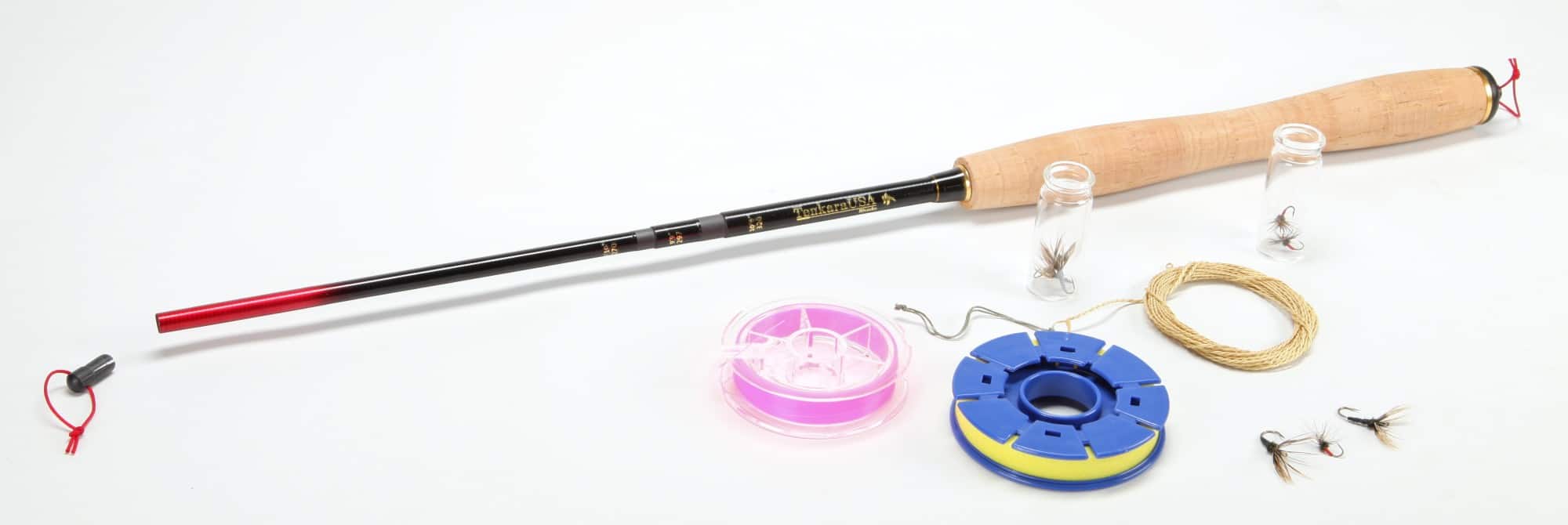Before I discovered tenkara I had been fly-fishing for nearly 13 years. I picked up western fly-casting fairly quickly, and because of that I thought I was at least adequate at fly angling. But, I could not consider myself a good fisherman. Indeed, casting is not all there is to fly-fishing. I wasn’t bad, but I think for too long I focused on the wrong things. Thinking back about my fly-fishing career, and especially looking at my last 6 years practicing tenkara, I know I have learned much more than 6 things, but here are 6 things that immediately come to mind and may be helpful to you right away:
1) The fish rising on the other side of a lake, river, or stream are just trying to distract you. They are taking one for the team, trying to fool you into thinking that all his companions are there with him, on the other edge. With nearly unlimited amounts of line on a spool it’s easy to think if you cast to him you’ll catch him. And, he knows that too, but he won’t be fooled. He’s fooling you. There are plenty of fish within 30ft, which you can easily reach with tenkara. Not all fish are 100ft away.
2) Drag is not the nemesis of fly-fishing; undesired drag is. You see, most of us think of drag as the thing to be avoided at all costs. And, yes, I do agree that many times drag is what will keep a fish from taking your fly. But, with tenkara I learned a few techniques that use drag (e.g. drag the fly on the surface of the water). It’s about having drag on the line/fly when you want that to happen.
3) Casting beautifully isn’t the goal. Contrary to popular belief the objective of fly-fishing is not exactly to get a beautiful loop formed in the air, or a cast that will drop jaws at a fly-fishing club. Rather, the objective of a fly cast is to deliver your fly efficiently where you want it. Sure, it’s nice to see beautiful casts, but tenkara taught me that an efficient cast is often more desirable than a “shadow-cast“, which as the name may imply will cause a thick fly-line shadow to spook all life from beneath it.
4) A 12-pocket vest doesn’t have to hold 12 fly boxes. What got me interested in fly-fishing to start was the flies, then I got my first fly rod and reel set. The next thing I really wanted was a fly-fishing vest, one with 12 pockets. That’s what I saw in magazines when I started fly angling, and I was tying so many flies that I figured that’s what I needed. Then came tenkara, and the idea that I could use one fly if I wanted to. Ironically, my teacher Dr. Ishigaki, continued using a fly-fishing vest. Many people would ask, “if he uses only one pattern, why does he wear a vest?”. Well, in one pocket he has a cell phone, on another a snack. And, since he’s a teacher, on the other pockets he usually has multiple spools of line he can setup his students with.
5) You know that quote by John Gierach, “Something to think about: If you fish the wrong fly long and hard enough, it will sooner or later become the right fly.” I have found that to be true.
6) Talking of flies, a fly does not have to be tied with polar bear hair to be effective. There are a myriad of fly-tying materials out there, some swear by the effectiveness of snake-skin, others polar bear hair. Learning how to use a fly tied with the simplest materials and catching as many fish as the guy using flies tied with golden-pearly-unicorn-pheasant will show you the fly can be pretty simple and still be the “right fly’.
